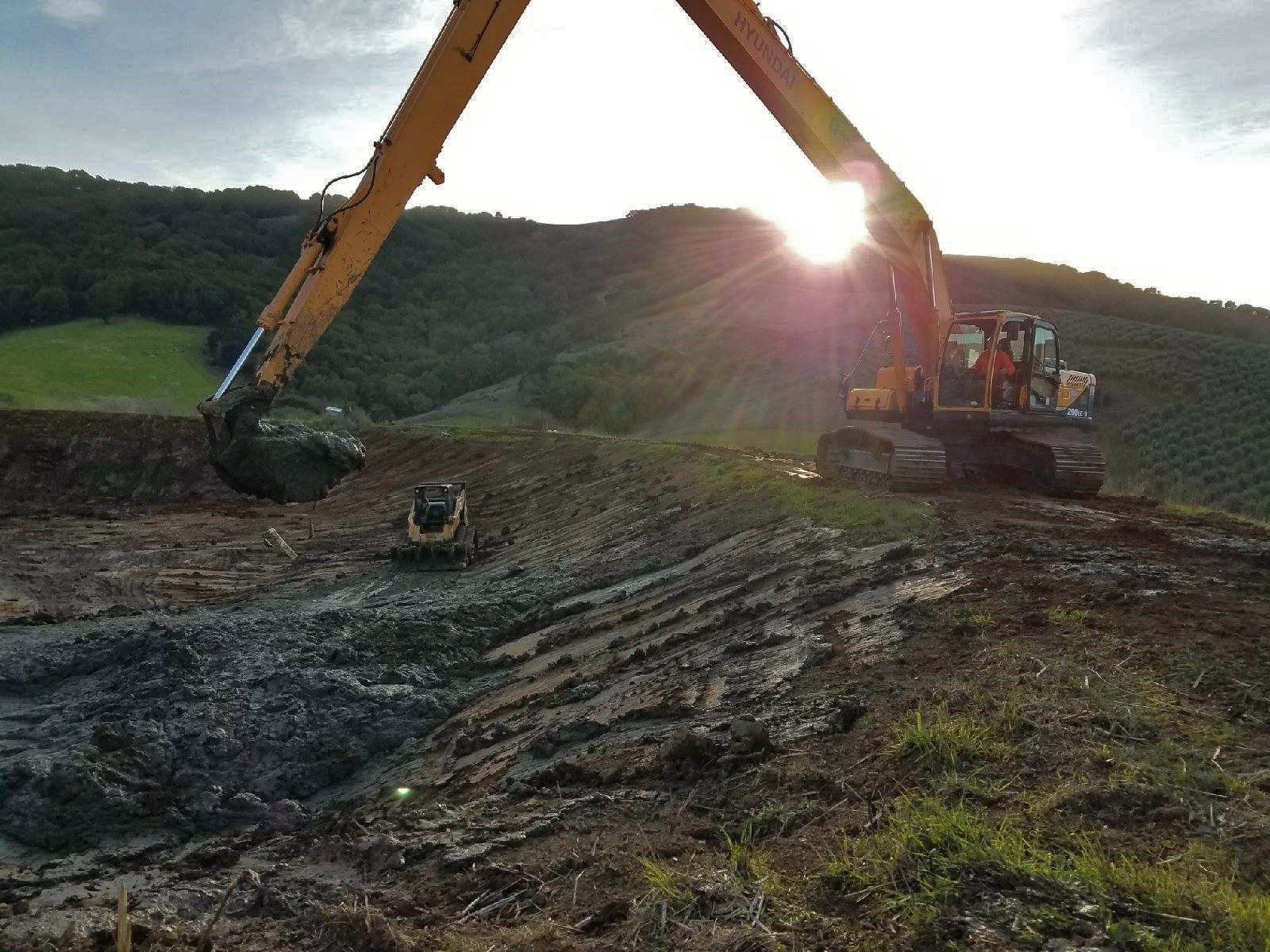
Pond Dredging Services To Improve Water Quality & Depth
Much like a living organism, lakes and ponds are born and age. Many factors like nutrient loading can affect the length of a waterbody’s existence, but the lifespan is ultimately considered complete when sediment builds up to the point that it can no longer retain water. While this is the eventual fate of every lake and pond, proactive lake management strategies like nutrient remediation, aeration, buffer management and hydro-raking can help prolong the lifespan of the waterbody for many years.
If your lake or pond is beyond saving through proactive management, the next best option is lake dredging services. Lake dredging services are a costly, but this tried and true solution that can give years back to your waterbody.
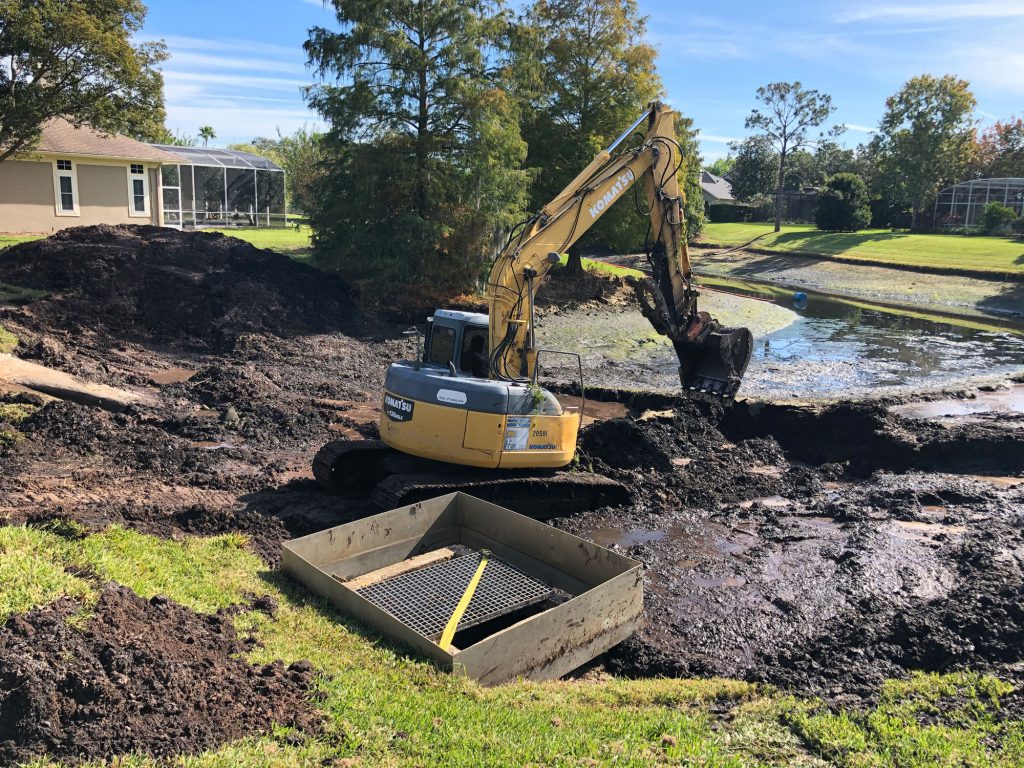
Reset Your Waterbody with Lake and Pond Dredging Services
There are several benefits of pond and lake dredging services including:
- Increase volume and depths to 15ft or more
- Remove nutrient-heavy sediments
- Eradicate deep-rooted plants and debris
- Clear selective areas such as beaches, docks and boating lanes
- Restore stormwater detention capacity and increase flow in channels
- Dispose of contaminated sediment and wastewater
- Reset the lifespan of a lake or pond
There are several methods of sediment removal: hydraulic dredging, clam shell/backhoe dredging, and dry dredging. The chosen method of lake or pond dredging services will depend on a number of factors including sediment composition, environmental sensitivity, volume of materials removed, budget and disposal considerations.
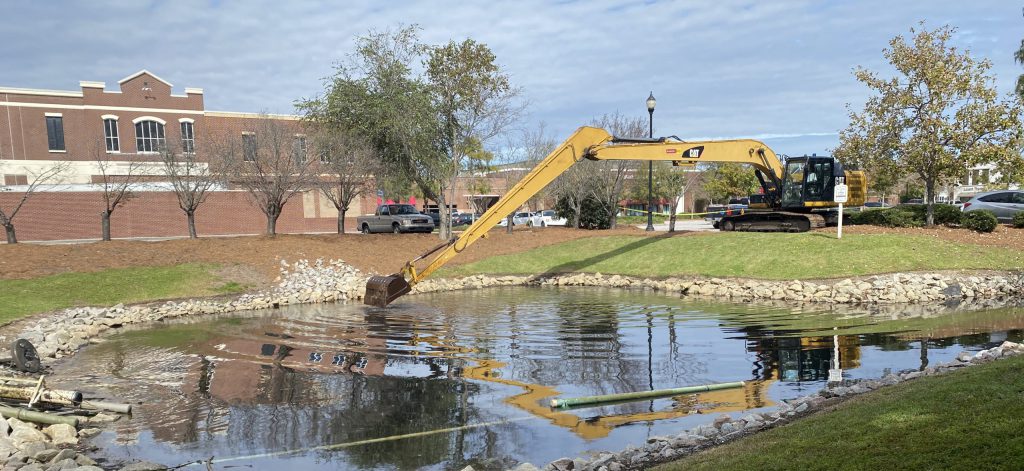
Mechanical Lake Dredging Services
Mechanical dredges use buckets to excavate sediments and transfer them to barges or trucks for disposal or beneficial reuse. Truck transportable mechanical dredges such as Aquamogs can be delivered to virtually any waterbody to remove sediments in targeted areas or to clear rooted marginal plants such as cattails from stormwater detention basins or flood control channels.
For most waterbodies, the most cost-effective option is mechanical pond dredging with a floating excavator or Aquamog that is capable of direct sediment transfer to dump trucks.
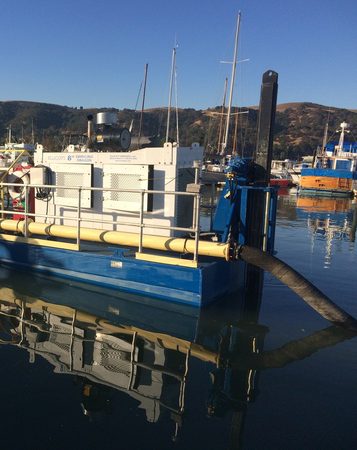
Hydraulic Dredging Services
Hydraulic dredges are the workhorse of the lake dredging industry and are effective in moving large volumes of organic and inorganic sediments. They utilize a rotating underwater cutter and pumps to create a liquid slurry (a mixture of sediment and water) which is transferred to a disposal site via a floating pipeline. This type of lake dredging has almost continuous operating cycles, facilitating the removal of large volumes of material in a short time, while minimizing turbidity in the water column. This method is better suited for sediments with relatively low levels of rocks and hard debris as they can damage the cutter and clog the pipeline.
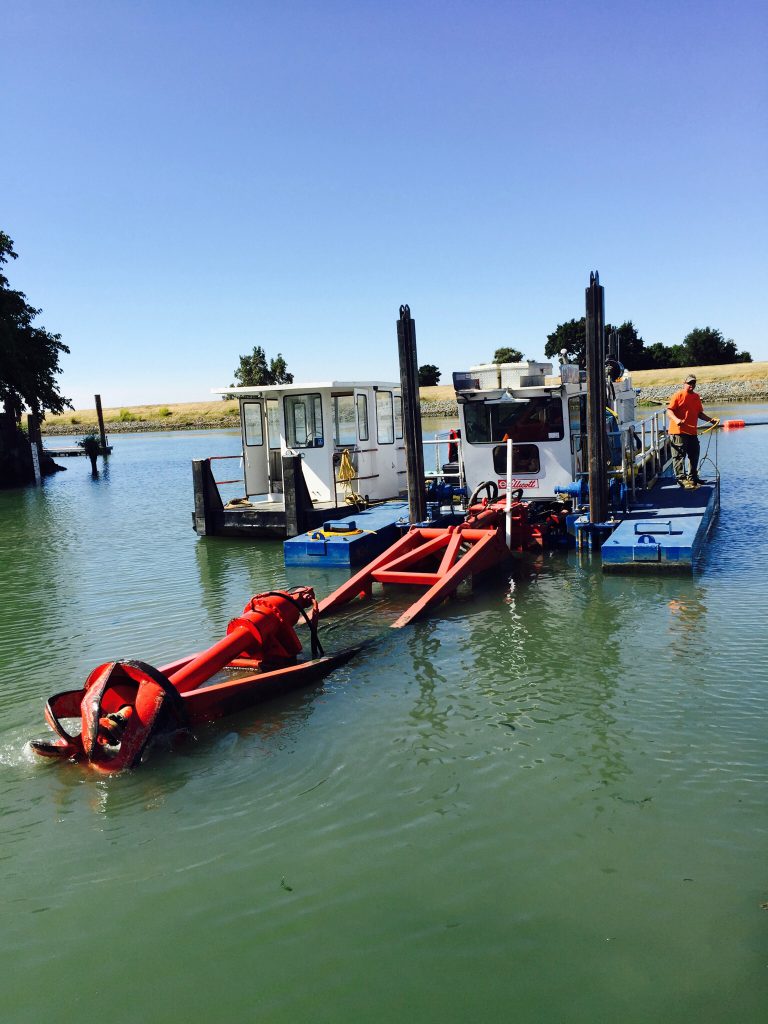
Is Hydraulic Dredging A Fit For Your Waterbody?
Hydraulic dredging services are generally preferred for lakes, rivers, and wetlands when the volumes are large and site logistics favor the transfer of sediments via pipeline over many truck trips. In smaller waterbodies, one must also consider how to replace several thousand gallons per minute of a water and sediment slurry that is pumped with a typical hydraulic dredge. Hydraulic dredging also requires large disposal ponds to allow natural drying of the slurry or portable dewatering equipment to squeeze enough water from the sediment so it can be transported by truck to a disposal site. If your waterbody has reached the point where its form or function requires a dramatic change and can be drained completely of water, dry dredging using conventional excavation equipment may also be an option.
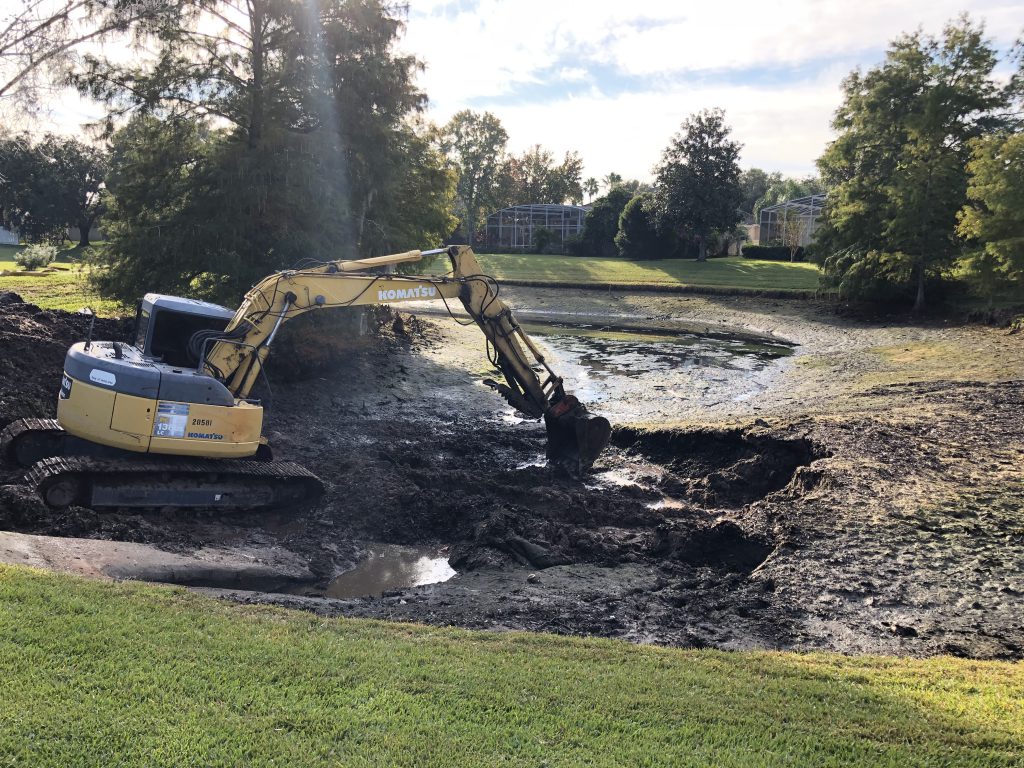
Common Questions About Lake and Pond Dredging
Property owners tend to have a lot of questions for dredging companies before they move forward with a pond or lake dredging project:
- How do you dredge the lake while minimizing downtime?
- What are the permit requirements for lake and pond dredging?
- What is the average cost to dredge a pond?
- Are there other ways to achieve the benefits of dredging at a lower cost?
The answers to these questions are rarely simple and thus we answer them with input from our team of engineers, environmental scientists, and regulatory professionals.
Alternative Solutions to Pond Dredging
Given that dredging lakes is one of the costliest and most invasive freshwater management projects your lake or pond will ever face, it’s wise to first consider hydro-raking and biological lake dredging as an alternative to traditionally dredging lakes. In many lakes and ponds, sediments are composed of organic materials that can be degraded onsite or consumed underwater using these strategies, which are often lower in cost than a permitted dredging project.
Your waterbody may benefit significantly from a full-scale lake dredging operation, or just a few days of budget-friendly spot dredging services at pump intakes, swimming areas, or around boat docks. To navigate through a wide variety of sediment, aquatic plant, or algae removal options for your waterbody, we encourage you to speak with your lake and pond management professional.









